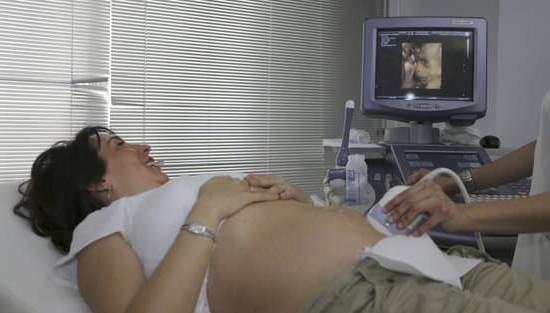Many women experience cramping during ovulation and wonder if it could be a sign of pregnancy. Understanding the relationship between ovulation, cramping, and pregnancy is essential for women who are trying to conceive or simply want to track their menstrual cycles.
Ovulation is a crucial part of the menstrual cycle, during which an egg is released from the ovary. This process typically occurs around mid-cycle and can cause various physical and hormonal changes in the body. One common symptom experienced by many women during ovulation is cramping, which can lead to questions about its connection to potential pregnancy.
Cramping during ovulation is normal for many women and may not necessarily indicate pregnancy. However, understanding the signs and symptoms of ovulation, including cramping, can provide valuable insight into a woman’s fertility and conception chances. It’s important to explore the possible reasons for cramping during this time and how it may or may not relate to the possibility of becoming pregnant.
Signs and Symptoms of Ovulation
Cramping during ovulation is a common experience for many women, and it can vary in intensity and duration. This sensation is typically felt as a dull ache or sharp twinge in the lower abdomen, often on one side of the body. Some women may also experience light spotting or discharge along with cramping during this time.
The cause of cramping during ovulation is believed to be related to the release of an egg from the ovary. As the egg is released, it can cause discomfort as it moves through the fallopian tube. Additionally, the hormonal changes that occur during ovulation, particularly the surge in luteinizing hormone (LH), can contribute to abdominal discomfort.
It’s important to note that while cramping during ovulation is normal for many women, it does not necessarily indicate pregnancy. However, timing-wise, experiencing cramping around the time of ovulation can increase the likelihood of conception if unprotected intercourse occurs during this window of fertility. It’s always best for individuals trying to conceive or avoid pregnancy to monitor their menstrual cycle and signs of ovulation closely.
| Cramping During Ovulation | Understanding |
|---|---|
| Sensation | Variety in intensity and duration; dull ache or sharp twinge; light spotting or discharge |
| Cause | Related to release of egg from ovary; hormonal changes (luteinizing hormone surge) |
| Pregnancy | Does not necessarily indicate pregnancy; increases likelihood of conception if unprotected intercourse occurs within fertility window. |
Cramping During Ovulation
Cramping is a common symptom that many women experience during ovulation, and it can be an indicator of the body’s natural fertility cycle. This sensation is often described as a dull ache or a sharp pain on one side of the lower abdomen, typically lasting anywhere from a few minutes to a few hours. The cramping occurs as the mature egg is released from the ovary and makes its way through the fallopian tube, ready for potential fertilization.
The cramping itself is caused by the expansion of the ovarian follicle before it ruptures and releases the egg. This process can cause irritation to the lining of the abdomen, resulting in discomfort. Additionally, some women may also experience spotting or light bleeding along with cramping during ovulation, which is known as mittelschmerz. This combination of symptoms further confirms that ovulation has occurred and that a woman is within her fertile window.
It’s important to note that experiencing cramping during ovulation does not automatically mean pregnancy. However, it does indicate that a woman’s body is functioning as it should in terms of reproductive health.
Ovulation and menstrual cycles can vary from woman to woman, so while some may feel noticeable cramping every month, others may have minimal or no discomfort at all. If you are actively trying to conceive and have concerns about your fertility status based on cramping or other symptoms, it’s advisable to consult with a healthcare provider for personalized guidance.
Is Cramping During Ovulation Normal?
Many women experience cramping during ovulation as a normal part of their menstrual cycle. This is often referred to as mittelschmerz, a German word that translates to “middle pain.” It typically occurs around the midpoint of a woman’s cycle, when an egg is released from the ovary. While it can be uncomfortable for some women, it is generally considered a normal and natural occurrence.
Some common signs of ovulation-related cramping include:
- Dull or sharp pain on one side of the lower abdomen
- Aching or twinging sensation that may last for a few minutes to a few hours
- Light spotting or discharge
The cramping sensation during ovulation is caused by the release of an egg from the ovary, which can cause irritation and minor bleeding in the surrounding tissues. Additionally, changes in hormone levels, particularly an increase in luteinizing hormone (LH), can also contribute to this discomfort.
For many women, cramping during ovulation is not severe enough to disrupt daily activities and does not require medical intervention. However, if the cramping is severe, persistent, or accompanied by other concerning symptoms such as fever or heavy bleeding, it may be indicative of an underlying health issue that requires attention.
In general, it is important for women to track their menstrual cycles and become familiar with their own patterns of ovulation and associated symptoms in order to distinguish between typical discomfort and potential warning signs. If there are any doubts or concerns about cramping during ovulation, seeking advice from a healthcare professional can provide reassurance and peace of mind.
Pregnancy and Ovulation
Ovulation is a key factor in the process of conception, as it marks the release of an egg from the ovary, making it available for fertilization. Understanding the relationship between ovulation and pregnancy is essential for women who are trying to conceive or avoid pregnancy. In this section, we will explore how ovulation affects the likelihood of pregnancy, including the window of fertility and conception chances.
The Window of Fertility
During a woman’s menstrual cycle, there is a specific window of time when she is most fertile. This window typically occurs around the time of ovulation, which is usually in the middle of her cycle. For women with regular 28-day cycles, ovulation often occurs around day 14. However, every woman’s cycle is different, so tracking ovulation through methods such as monitoring basal body temperature and cervical mucus can help determine the most fertile days.
Conception Chances
The likelihood of pregnancy is highest during ovulation and the days leading up to it. Sperm can survive in the female reproductive tract for several days, so having intercourse in the days prior to ovulation can still result in fertilization when the egg is released. Understanding one’s fertile window and timing intercourse accordingly can significantly increase the chances of conception.
Impact on Pregnancy
If a woman successfully conceives during ovulation, this marks the beginning of her pregnancy journey. The fertilized egg implants itself into the uterine lining and begins to develop into an embryo. It’s important to note that while ovulation increases the likelihood of pregnancy, there are also many other factors at play when it comes to successful conception. This includes overall reproductive health, sperm quality, and any potential fertility issues that may affect either partner.
Understanding how ovulation affects pregnancy can empower women to take control of their reproductive health and family planning goals. By being aware of their fertile window and maximizing their chance for conception during this time period, women can increase their likelihood of becoming pregnant if that is their goal.
Other Possible Reasons for Cramping
Cramping is a common symptom experienced by many women during their menstrual cycle, but it can also occur at other times for various reasons. While cramping during ovulation may be a natural occurrence, it’s important to consider other possible reasons for this sensation that are not related to ovulation or pregnancy. Here are some potential causes of cramping unrelated to ovulation or pregnancy:
1. Menstrual Period: Cramping is a common symptom of the menstrual period, often occurring just before or during the start of menstruation. This type of cramping is typically caused by the uterus contracting to shed its lining, leading to discomfort and pain in the lower abdomen.
2. Gastrointestinal Issues: Digestive problems such as gas, bloating, constipation, or diarrhea can also cause abdominal cramping. These issues may be related to diet, stress, or underlying medical conditions affecting the digestive system.
3. Endometriosis: Endometriosis is a condition where tissue similar to the lining inside the uterus grows outside the uterus, often causing pelvic pain and severe cramping during menstruation.
4. Pelvic Inflammatory Disease (PID): PID is an infection of the female reproductive organs, often caused by sexually transmitted infections (STIs) such as chlamydia or gonorrhea. It can lead to symptoms such as abdominal pain and cramping, especially during intercourse or urination.
5. Ovarian Cysts: The presence of ovarian cysts can lead to sharp or dull ache in the lower abdomen, particularly if they rupture or become twisted.
Considering these potential reasons for cramping that are unrelated to ovulation or pregnancy is important for understanding your body and knowing when to seek medical advice if needed. It’s crucial for women to pay attention to their symptoms and seek professional medical guidance if they experience prolonged or severe cramping that does not seem related to ovulation or their menstrual cycle.
When to Seek Medical Advice
Normal vs. Abnormal Cramping
It is important to differentiate between normal cramping during ovulation and potentially abnormal cramping that may warrant medical attention. Normal cramping during ovulation typically occurs around the midpoint of a woman’s menstrual cycle and is often described as a mild, dull ache in the lower abdomen. This type of cramping is usually brief and lasts only a few hours to a couple of days.
On the other hand, abnormal cramping during ovulation may be more severe, prolonged, or accompanied by additional symptoms such as heavy bleeding, fever, or intense pain. If a woman experiences sudden, sharp pains outside of her regular ovulation pattern or if the cramping becomes debilitating, it may indicate an underlying issue that requires medical evaluation.
Underlying Health Conditions
In some cases, experiencing cramping during ovulation could be a symptom of an underlying health condition unrelated to pregnancy. Conditions such as endometriosis, pelvic inflammatory disease (PID), ovarian cysts, or fibroids can cause discomfort similar to ovulatory cramps.
Additionally, issues with the reproductive organs or hormonal imbalances may also manifest as abdominal cramping around the time of ovulation. If a woman has a known history of these conditions or if the cramping becomes increasingly severe over multiple cycles, seeking medical advice is advisable.
Red Flags and When to See a Doctor
While occasional mild cramping during ovulation is generally considered normal and does not require medical intervention, there are certain red flags that should prompt a visit to a healthcare provider. Women should seek medical advice if they experience intense or prolonged pain associated with suspected ovulation, especially if it interferes with daily activities or is accompanied by other concerning symptoms such as abnormal bleeding or fevers.
Furthermore, women who have been actively trying to conceive without success despite regular menstrual cycles and confirmed ovulation may benefit from consulting with their healthcare provider to explore fertility options and discuss potential causes for their difficulty in achieving pregnancy.
Conclusion
In conclusion, cramping during ovulation is a common occurrence for many women and does not necessarily indicate pregnancy. The process of ovulation itself can cause discomfort, including mild to moderate cramping, which is usually nothing to be concerned about. Understanding the signs and symptoms of ovulation can help women identify when they are most fertile and increase their chances of conceiving if pregnancy is their goal.
It’s important to remember that while cramping during ovulation may not automatically mean pregnancy, it can still provide valuable information about a woman’s menstrual cycle and fertility. Tracking ovulation symptoms, including cramping, can aid in determining the most fertile days for conception. However, it’s crucial to consult with a healthcare provider if there are any concerns or unusual symptoms experienced during ovulation, as these could be indicative of other health issues.
For those who are actively trying to conceive or are concerned about the potential signs of pregnancy, seeking professional medical advice or speaking with a fertility specialist can provide personalized guidance and support. Additionally, understanding one’s individual menstrual cycle and being aware of the various signs and symptoms associated with ovulation can empower women to take control of their reproductive health.
Overall, staying informed and seeking appropriate medical assistance when needed are essential steps in managing any concerns related to cramping during ovulation and potential pregnancy.
Frequently Asked Questions
Does Cramping During Ovulation Mean Conception?
Cramping during ovulation does not necessarily mean conception has occurred. Ovulation cramps, also known as mittelschmerz, are caused by the release of an egg from the ovary and are a normal part of the menstrual cycle.
What Are the Symptoms of Pregnancy During Ovulation?
Symptoms of pregnancy during ovulation can vary from person to person, but some common signs may include breast tenderness, increased basal body temperature, changes in cervical mucus, and a heightened sense of smell. However, these symptoms can also be related to other factors.
Am I Pregnant if I Have Ovulation Pain?
Having ovulation pain does not necessarily mean you are pregnant. Ovulation pain, or mittelschmerz, is simply a result of the process of your body releasing an egg from the ovary. It does not confirm or rule out pregnancy. A pregnancy test would be needed for confirmation.

Welcome to my fertility blog. This is a space where I will be sharing my experiences as I navigate through the world of fertility treatments, as well as provide information and resources about fertility and pregnancy.





